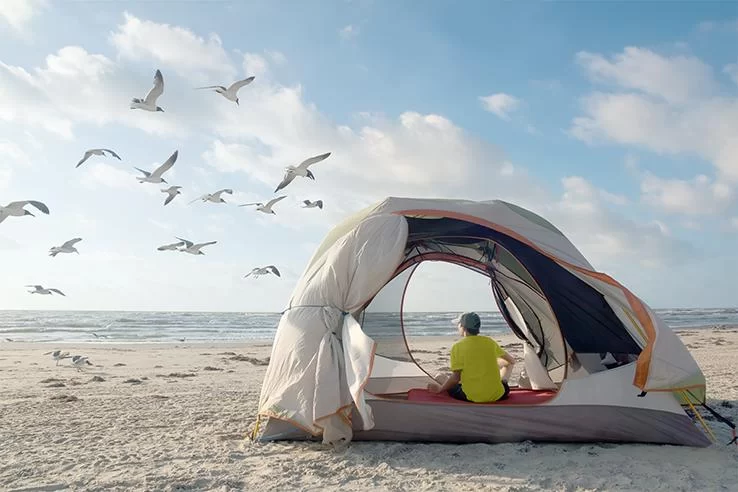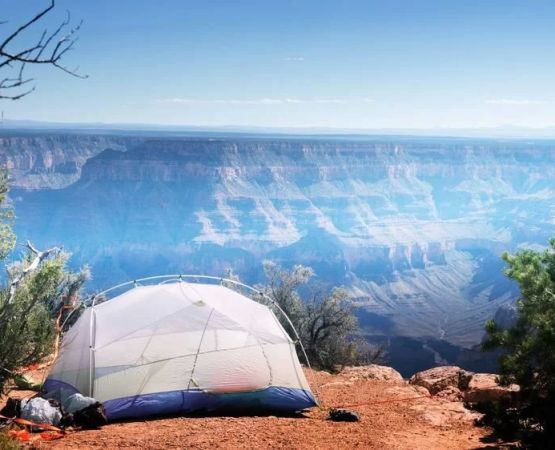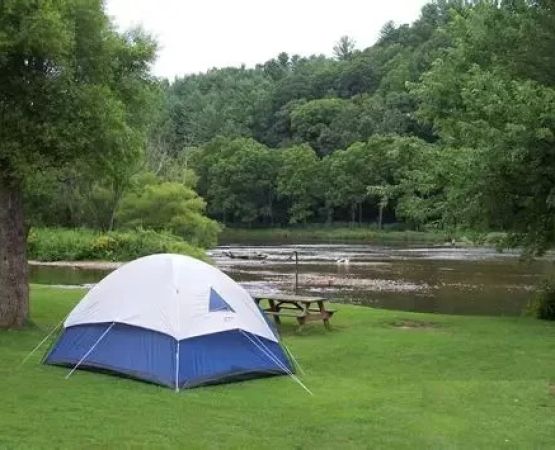Choosing the Best Camping Gear for Wilderness Survival
When I first started venturing into the wilderness, I was filled with excitement and anticipation. But as I quickly learned, the reality of surviving in the wild is much more complex than the idyllic images we often see in outdoor advertisements. Choosing the right camping gear for wilderness survival is a matter of safety, practicality, and preparation. Over the years, I’ve gathered a list of essential tools and gear that every outdoor enthusiast should consider when heading out for a wilderness adventure.
1. Survival Backpack: The Core of Your Gear
The first item on my list is a good survival backpack. This is where you’ll store everything you need for the trip, so it’s crucial to choose wisely. I learned the hard way that a cheap, poorly made backpack could break under the weight of your gear, leaving you stranded or forced to carry everything in your arms. I personally recommend a durable, waterproof backpack with plenty of compartments for easy organization.
Look for a backpack that’s lightweight yet large enough to carry essential survival gear. The ones with adjustable straps and ventilation will ensure comfort, especially if you're on the move for long hours. Some even come with built-in hydration systems—perfect for those long treks when water sources are scarce.
2. Reliable Shelter: Tents and Sleeping Bags
When I first ventured out on my own, I underestimated the importance of a solid shelter. Your shelter protects you from the elements, and it’s often your first line of defense against nature’s unpredictability. I always choose a lightweight tent with a waterproof rainfly, as you never know when it might rain in the wild. My advice: always test your gear before heading out into the wilderness, just to be sure everything functions properly.
Equally important is your sleeping bag. I’ve spent a few sleepless nights in cold weather because I didn’t prioritize my sleeping bag. If you’re camping in colder climates, make sure to choose a sleeping bag with an appropriate temperature rating. I personally prefer sleeping bags that are down-insulated because they’re lightweight and incredibly warm. Just remember to keep it dry, as wet sleeping bags can render you useless in a survival situation.
3. Fire-Starting Tools: A Campfire Can Save Your Life
One of the first lessons I learned in wilderness survival was the importance of fire. Not only does it provide warmth, but it also acts as a signal for help in an emergency. I never go camping without a fire starter, and I always carry multiple methods. A ferrocerium rod is one of the most reliable tools I’ve found, and it’s also small and light enough to fit in any survival kit.
In addition to a ferro rod, I also pack waterproof matches and a lighter, just to be sure I have a backup in case one method fails. In an emergency situation, having the ability to start a fire can mean the difference between life and death, especially when the temperature drops or you're unable to find food right away.
4. Multi-tool or Survival Knife: Your Ultimate Utility Tool
Having a reliable tool on hand is a game-changer. When you're deep in the wilderness, you'll encounter all kinds of tasks—whether it’s preparing food, building shelter, or cutting rope for a makeshift trap. That’s why a multi-tool or survival knife is a must-have. I’ve used my multi-tool for everything from cutting branches to fixing my gear, and I can’t recommend it enough.
Look for a knife or tool that offers a variety of functionalities—blades, pliers, screwdrivers, and even a can opener. I find that Swiss Army knives are incredibly versatile and long-lasting. For wilderness survival, a fixed-blade knife with a full tang is also a solid choice, as it’s strong and can take more abuse than a folding knife.
5. Water Filtration: Stay Hydrated in the Wild
Water is the most crucial survival need, and yet, it’s one of the most often overlooked aspects when preparing for a wilderness camping trip. Early on in my adventures, I learned the hard way that even streams and rivers can be contaminated. I now always carry a portable water filter. The simplicity of a filter pump or straw system means that I can safely drink from most water sources without worrying about bacteria or parasites.
For longer expeditions, you might also consider a gravity water filter or a purification tablet as a backup. I always make sure to pack a water container as well, preferably one that’s durable and light. Staying hydrated is not just about drinking water—it's about knowing how to find and purify it effectively.
6. Food and Cooking Gear: Essentials for Nutrition
When you're out in the wilderness, it's easy to forget about food, but hunger can quickly drain your energy, making it harder to survive. I recommend packing lightweight, high-calorie foods like trail mix, energy bars, or freeze-dried meals. These items are easy to carry, require minimal preparation, and provide a quick energy boost when you need it most.
For cooking, I never go without a compact stove or portable cookware. I’ve tried several stoves, but I find that a small gas stove is the most efficient and lightweight. Pair that with a titanium pot, and you can easily boil water for meals or purify water when needed. Don’t forget a small, collapsible utensil set for convenience. You can also pack a fire starter for cooking if you prefer to go more traditional.
7. Navigation Tools: Always Know Your Way
One of the biggest mistakes I’ve made in the wilderness was underestimating the importance of navigation. Whether you’re hiking in a national park or exploring a remote forest, it’s easy to get lost. I always carry a map and compass, and I’m diligent about learning how to use them before heading out. It’s also worth investing in a GPS device—while it's not a substitute for traditional navigation, it can be invaluable if you get lost.
Be sure to familiarize yourself with your route and have a contingency plan in case you stray off course. Many wilderness survival situations begin when people lose their way, so knowing how to navigate is key to avoiding dangerous situations.
8. First Aid Kit: Be Prepared for Accidents
Accidents happen, no matter how careful you are. I’ve had my fair share of cuts, scrapes, and blisters in the wilderness, and it’s critical to have a well-stocked first aid kit. When you’re miles from civilization, even a small injury can become a big problem if not treated properly. I carry bandages, antiseptic wipes, tweezers, and blister pads, and I always include pain relievers, especially for long hikes or strenuous activities.
Additionally, consider including any personal medications you may need and items like an emergency whistle, which can be helpful if you get injured and need to signal for help.
9. Emergency Signal and Survival Tools
In the wilderness, the unexpected can happen. That’s why I always bring along emergency signaling tools, such as a whistle, flare, or signal mirror. These tools can be lifesavers in the event that you get lost or need help. I’ve used my whistle to alert my group when we were separated on a hike, and it’s an essential item in any survival kit.
Survival tools like a space blanket or a signal mirror can also help increase your chances of being found. Space blankets are lightweight and can keep you warm in emergency situations, and a signal mirror can help attract the attention of rescuers from miles away.
Conclusion: Be Prepared for the Unexpected
Choosing the right camping gear for wilderness survival is all about preparation. Over the years, I’ve learned that the key to a successful outdoor adventure is having the right tools and knowing how to use them effectively. Whether it’s a reliable shelter, a good survival knife, or the ability to start a fire, each item in your survival kit plays a crucial role in keeping you safe. So, take the time to invest in quality gear, and most importantly, learn how to use it before your next wilderness trip. Trust me, your future self will thank you!







